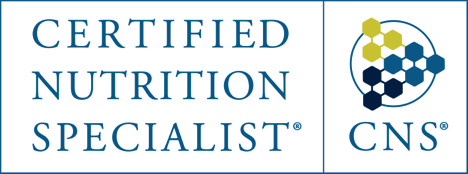Roni Enten Vissoker PhD
CNS, LDN
Individualized Biomedical Nutritionist


Home » Gluten and casein free diets (GFCF/SF diet) for autism and ASD

Introduction to the GFCF/GFCFSF diet
The gluten and casein (and soy) free diet was the first “special diet” that caught on in the world of the biomedical treatment approach for autism. Today, it is considered a foundational diet for many children with autism. The main premise of the GFCFSF diet is the elimination of all foods containing gluten, casein and soy from the diet, with the goal of alleviating a range of symptoms experienced by individuals with ASD as well as ADHD and other related disorders. This diet may be implemented for individuals who are unable to properly digest these proteins, have one or several types of allergies to these proteins, or have a sensitivity to them.
Gluten is a protein present in wheat, rye, barley, and oats and other ingredients derived from these grains. It is present in foods such as breads, pizza, pastas, cakes, pastries, noodles, and cold and hot cereals. However, it is also present in certain processed products such as non-dairy creamers, malt drinks, sauces, chocolates, beer, gravy, mayonnaise, stocks, and processed meats. (See end of article for a more complete list.)
Casein is a protein, found in the milk of mammals. Eliminating casein from the diet requires removing all dairy products and foods which contain dairy ingredients (found in list at end of article). In addition, casein is also rich in glutamate, an excitatory neurotransmitter which can increase anxiety and/or hyperactivity in certain children.
To date, most clinicians who work with the diet also recommend that soy also be avoided for most children, due to the close similarity of the structure of soy peptides to that of gluten and casein peptides. [Note: For those individuals with sensitivity to just one of these proteins, gluten free diet, a casein free diet or a soy free diet may be more appropriate.]
The opiate peptides theory
The GFCFSF diet began to take hold in the autism community after Dr. Karl Reichelt, a researcher in Norway, found abnormally high levels of peptides in the urine of people with autism. These results were later replicated by Dr. Paul Shattock at the University of Sunderland in the UK. Since the levels of peptides they were both discovering greatly exceeded what could be attributed to originating from the CNS, the researchers presumed they were coming from the incomplete breakdown of certain foods.1,2
Further studies led them to discover that the intestinal enzymes of these same individuals which were supposed to be breaking down proteins into smaller peptides and then amino acids, were not working the way they should; the resulting incomplete digestion process left undigested peptides in the gut, namely casein and gluten (casomorphin and gliadinomorphin) which remained biologically active and passed into the bloodstream, causing neurological symptoms. Today, there are quite a few studies which explore opiates in autism1-3, and the reduction of gastrointestinal symptoms and of autistic symptoms with a GFCF diet.4-6
In addition, it is also known that gluten can trigger an inflammatory response in the GI tract of some individuals. The presence of such inflammation can lead to altered intestinal permeability, and in turn, may cause nutrient absorption issues, as well as intestinal hyperpermeability or ‘leaky gut’ which can result in large molecules being absorbed into the bloodstream, which are not normally able to pass through, and often result in the development of allergies. Increased absorption of gluten, casein and their metabolites as well as other proteins into the bloodstream and potentially across a ‘leaky’ blood-brain-barrier, may worsen autistic symptoms and other neuropsychiatric symptoms.
GFCF/SF diets: The science
Although there is a growing body of research to support the use of GFCFSF diets, the media often fails to report this info, creating a wide misconception about the efficacy of this diet for children with ASD. Here is just some of the research that has been done on the diet which has shown positive results:
In addition to the research-reported benefits, many parents and clinicians report the following changes in children on the GFCFSF diet:
Ensuring a balanced and healthy GFCFSF diet
While the GFCFSF diet can be life changing for many families, it is important to make sure your child’s special diet does not become limited or restricted in variety and nutrition. Here are some of the key nutrients to watch out for on such a diet:
Calcium: Since dairy is a chief source of calcium for many children, it is important to be sure to replace calcium with other foods or better yet, a supplement.(LINK)
Fiber: Many children who rely on starchier GF foods while transitioning to the diet may have limited fiber intake. Check out my high fiber food list (LINK) or consider supplementing fiber while diet balances out (LINK).
Overall nutrition: The diet is still restrictive of commonly consumed foods thus it is highly recommended to work with a nutrition professional to make sure that your child is getting adequate nutrition overall.
Other potential issues
Arsenic: This diet often includes a higher amount of rice when GF food substitutes are incorporated – please limit rice intake to avoid excess arsenic consumption, which has been linked with adverse health effects in multiple organ systems including the stomach, kidneys, liver, and in coronary heart disease and diabetes (nutrition.org.uk).
Please note, the following are to be used for educational purpose and general guidelines and are NOT complete lists.
Casein List
General Dairy Products: Milk, Cheese, Butter, Yogurt, Sour Cream, Ice Cream, Sherbet
Milks and Milk Components: Milk powder, protein, fat, solids, Acidophilus milk, Lactaid milk, Buttermilk, Condensed milk, Cultured milk, Evaporated Milk, Goats milk, Malted milk
Butter: Artificial butter flavor, Butter fat, Butter flavored oil, Buttermilk butter, Whipped butter, Margarines (check labels)
Cheese: Hard cheeses, Soft cheeses, Cheese food, Cheese flavor, Goat cheese, Cottage cheese, Cream cheese, Most Soy and Rice cheeses (check labels for casein)
Casein & Caseinates (often found in canned tuna and salmon): Ammonium, Calcium, Magnesium, Potassium and Sodium Caseinate
Creams: Half & Half, Whipped cream, Coffee creamer, Non-dairy creamer, Imitation cream, Coconut cream
Lactose and its Derivatives (often found in prescription drugs!): Lactate/Lactic acid, Lacto globulin, Lactalbumin, Lactoferrin, Lactalbumin phosphate, Sodium lactylate, Lactulose
[Note: Some lactic acid can be derived from cornstarch, potatoes and molasses, which would be an acceptable source]
Whey: Acid, Cured, Delactosed, Demineralized, Hydrolyzed, Powdered wheys, Whey concentrate, Whey powder, Whey protein, Whey solids
Flavorings: Natural Flavoring, Caramel flavoring, Coconut cream flavoring, Chocolate flavoring, Cream flavoring, Brown sugar flavoring, etc.
Gluten List
All Flours made from Wheat, Barley, Oats, Spelt, Rye and Kamut:
All Purpose, Barley, Bread, Brown, Cake, Durum, Enriched, Gluten, Graham, Granary, High gluten, High protein, Oat, Pastry, Rye, Semolina, Seitan, Sprouted, Wheat, White, Whole Wheat, Strong flours
All Cereals made from Wheat, Barley, Oats, Spelt, Rye and Kamut:
Cereal extract, Cereal binding, Bran, Farina
Wheat: Bran, Durum, Triticum, Germ, Gluten, Oats, Nuts, Starch, Pasta, Triticum Aestivum, Triticum Mononoccum, Abyssinian hard, Whole berries, Hard wheat
Whole Grains: Oats, Barley, Pearl barley, Job’s Tears (aka: Pearl Barley) Rye, Spelt, Spelt triticum, Bulgur, Kamut
Pastas: Egg noodles, Semolina, Semolina rye, Soba noodles, Buckwheat noodles
Starches: (check sources, could be wheat or corn): Modified starch, Modified food starch, Food starch, Gelatinized starch, Vegetable starch
Malt products: Extract, Flavoring, Syrup, Vinegar, Barley malt, Rice malt (contains barley or koji), Grain alcohols (most malts are barley-derived, although rice and corn can be used as well)
Colorings and Flavorings: Natural flavoring, Natural coloring, Caramel coloring, Natural color, High protein flavor, Mustard powder
Hydrosylates: (most vegetarian meat substitutes contain these) Hordeum, Casein, Milk protein, Whey, Whey protein hydrosylates, Hydrolyzed Vegetable protein, Oat starch, Plant protein
Seitan
Soy List
Green soybeans (Edamame)
Hydrolyzed vegetable protein
Soy-based infant formulas
Soybean oil
Vegetable oil
Lecithin (many soy sensitive people have no problem with soy lecithin, though)
Meat alternative foods
Miso
Natto
Non-dairy desserts
Oyster sauce
Soy cheese
Soy fiber
Soy milk
Okara
Soy bran
Soy isolate fiber
Soy flour
Texturized vegetable protein
Tuna, canned
Soy sauce
Soy yogurt
Soy nuts
Soy beverages
Tempeh
Tofu
Vegetable broths
Yuba
References
Comments Off on Gluten and casein free diets (GFCF/SF diet) for autism and ASD